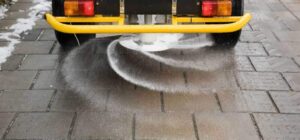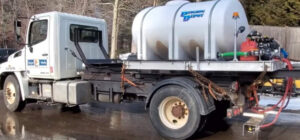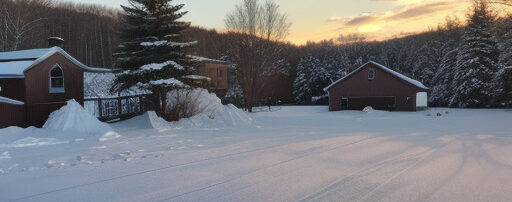If you are reading this you are probably in charge of a facility in New Hampshire and you may be wondering what brine has to offer to your facility this winter. Im here to help you make an informed decision on, to brine or not to brine?
 To start this conversation, I think its important that we highlight the disadvantages of salting your pavement over a brine application. As we know, salt is extremely expensive for the amount that typical property managers would need to cover large areas of ground in winter.
To start this conversation, I think its important that we highlight the disadvantages of salting your pavement over a brine application. As we know, salt is extremely expensive for the amount that typical property managers would need to cover large areas of ground in winter.
On top of cost, it also damages property by accelerating corrosion of vehicles, infrastructure and metal components such as bridges and guard rails. This corrosion not only detracts from your property and equipment’s lifespan, but it also adds to ever growing cost of using salt as a tool for de-icing.
If you live in New Hampshire, you may also be aware of the negative environmental impact that salt has. I think it was somewhere around 2020 when we received our first notice in the mail about the damage salt was causing In our water streams.
It turns out that up to 50% of the chlorine overload in our water was coming from parking lots, driveways and private roads using salt to de-ice in the wintertime. So, in conclusion, salt damages the environment, your property and your equipment.
Im sure you’re asking now, what’s so good about brine? Isn’t that just salt water? Well, yes, it is, but that’s what makes it so much more efficient and cost effective. With brine you are essentially stretching the salt you would typically use to almost 77% more usage as brine is only 23% salt when prepared correctly.
The thing that makes brine so much better is when you apply it correctly, brine soaks into the pavement and stays for multiple days. This means you can get ahead of those giant storm warnings by ensuring your parking lot just doesn’t freeze in the first place.
Pre-treating your parking lot is a lot like greasing a pan before you cook. The liquid brine will allow for the snow plow to easily clean up the snow from the top of the pavement, without having to pick away at any built up ice. A lot like cooking runny eggs, when done you can easily clean up as nothing is stuck deep within the pores of your pan.
 Here at Design Works Landscaping what we do to get ahead, is yearlong we host a brine tank that we test repeatedly throughout the year and before every application. This ensures the perfect concentration of salt every single time so you get the best coverage for those hardy winter storms. You can watch a video of us working on our brine tank here. (And check out our Facebook while you’re there)
Here at Design Works Landscaping what we do to get ahead, is yearlong we host a brine tank that we test repeatedly throughout the year and before every application. This ensures the perfect concentration of salt every single time so you get the best coverage for those hardy winter storms. You can watch a video of us working on our brine tank here. (And check out our Facebook while you’re there)
Want to know more about our brine application? Give us a call today and see what we can do about keeping your facility ice free this winter.





